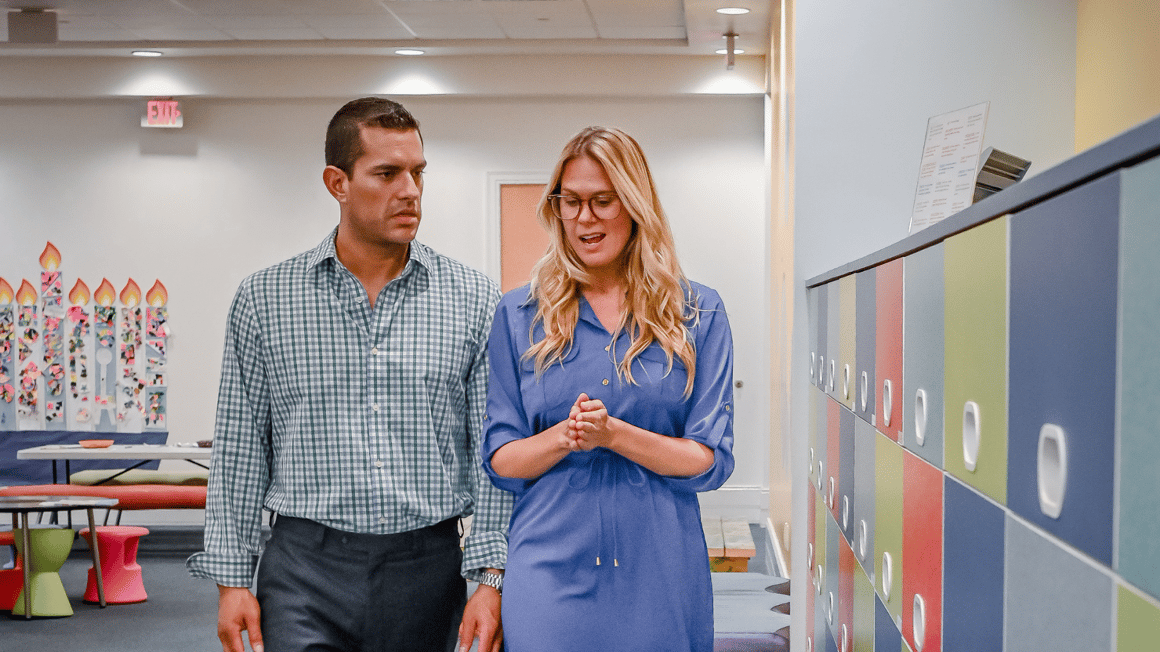

Published: September 01, 2022
I am in multiple school buildings every week. When I walk in, I can immediately feel the culture of the school. In some schools, I’m greeted warmly in the front office and receive smiles from teachers walking down the hallway. School leaders and coaches are hard to find because they’re in classrooms, not in their offices.
In some schools, teachers are hiding in their classrooms while school leaders sit in their offices, having discreet meetings amongst themselves. Teachers feel stressed out when change comes and principals most often interact with teachers during their formal observations.
All schools have a culture. The difference is whether we intentionally build it or if it is the accidental culture created by who happened to show up that year. We want to purposefully build cultures that leave teachers feeling like their instructional coaches are saying a supportive “I Got Ya” within their coaching cycles and data dives. Not an attacking “Gotcha!” doing those same activities. To create this kind of culture, three things must be safe to do throughout your school: giving/receiving feedback, making mistakes, and public struggle. Here’s how to do that.
Why Feedback, Struggle, and Mistakes?
“I Got Ya” culture requires trust. Schools must normalize talking about and embracing struggle, mistakes, and feedback to build a psychologically safe environment. Amy Edmonson, considered the “mother” of psychological safety, defines it as, “a belief that one will not be punished or humiliated for speaking up with ideas, questions, concerns, or mistakes and the team is safe for interpersonal risk-taking.”
Let’s unpack this definition. For a school environment to be safe, the teachers need to feel safe to make mistakes and raise concerns without fear of being punished or humiliated in any way. Is your school culture currently psychologically safe? Building a psychologically safe environment must be created with intention.
Know When to Embrace Mistakes and Struggle
Research shows that when we are transparent about the types of mistakes that are praiseworthy versus blameworthy, it builds the level of psychological safety amongst our staff. What happens to staff that are being intentionally negligent versus staff that are testing new ideas in the classroom? Transparency and consistency are key here!
Carol Dweck and her colleagues identified two zones that we often switch between: the performance zone and the learning zone.
These zones have different goals and different relationships with failure and mistakes. In the learning zone, we are trying new things, experimenting, embracing mistakes, and analyzing our failures as an opportunity for growth. Struggle is expected and necessary for improvement. This is when we want to take risks and allow learning to be messy. Think about rehearsals for a play. Lines might be messed up, the actors are still practicing their choreography and they might be trying out new moves.
The performance zone, on the other hand, is where you want a finished product or complete understanding. This is not a time to be messy or analyze failures. Think about the play. This is where showtime happens! The goal isn’t to embrace mistakes. It is to produce something complete and ready.
Giving and Receiving Feedback
Giving and receiving feedback gives us a real opportunity to build trust, or reduce it. Embracing feedback as an opportunity to learn and improve is central to operating in that “I Got Ya” culture. In Episode 4 of my podcast, “Coaching the Whole Educator”, I discuss how schools default to a compliance culture and how we must intentionally take actions to build an engaged culture where teachers feel ownership over the quality of teaching in their classrooms.
Research shows that teacher mindsets impact how they communicate praise to their students and, therefore, impact their students’ mindsets. If we want to impact classroom culture, we must first impact the school culture. And culture starts with what we normalize. What we praise impacts behavior. How we praise impacts mindset.
As a coach, it’s vital you are consistently not only giving feedback but also asking for it. This is part of operating under a growth mindset. You want to stop assuming the support you provide is helpful and start checking in with the very people you’ve been tasked with supporting. Just because you are providing help in a way you might have appreciated as a teacher does not mean it’s helpful to all of your teachers.
An audience listening to the symphony may be silent, but they are not passive and opinionless. It doesn’t matter if the musicians are talented. Their music must resonate with the listeners. Similarly, an instructional coach is only effective when they resonate with their teachers.
I was once coaching a school leadership team that wanted to grow an “I Got Ya” culture. They earmarked a growth mindset as something they wanted to intentionally grow in their school culture. All of the strategies I gave them to implement fell flat. The leadership team asked me to come in and run a few workshops to model how to implement a growth mindset curriculum. I quickly realized that the teachers were all afraid to make mistakes.
The principal, while trying her best to have high expectations, had inadvertently sent the message that things needed to appear perfect in the classrooms when she came in. The first thing we needed to address wasn't the growth mindset. It was her teachers’ sense of safety to take risks and make mistakes. She needed to establish psychological safety.
Discussing Data is Vulnerable
Giving feedback, whether it’s in the form of verbal feedback or based on assessment data, can feel vulnerable for an educator. However, vulnerable moments are not to be avoided. Moments like these, if done in a way that feels safe and supportive, increase human connection and relatedness. This is a real opportunity to empower our educators.
When discussing data with your teachers, make sure you:
- Are transparent about how the data is used.
- Dissect “failures” for what can be learned from it
- Emphasize growth over comparison (and celebrate it)
Here are some practical ways you could engage in empowering data discussions:
- I noticed… And I’m wondering…
- I can see improvement in your instruction. What have you been doing differently in your planning and preparation?
- It’s great that you have that skill down. I think you’re ready to step outside of your comfort zone to try something new.
- You’re clearly masterful at that! Would it be ok if I suggested something that pushed you a little?
- I know you are feeling (discouraged, frustrated, etc) lately. What do you think are your barriers? How can I support you in overcoming them?
- What do you think are your barriers? How can I support you in overcoming them?
- I want you to remember for a moment how challenging this was when you began. Look how far you’ve come!
Let’s start intentionally building cultures that create a safe space for our teachers to take risks, be messy, receive feedback and feel like their coach is a partner on their team. Our data discussions can be used to uplift our educators or disempower them. You choose.
About the Author
Becca Silver is the Founder and Lead Consultant at The Whole Educator. Her training programs and customized one-on-one coaching focuses on fostering teacher buy-in and bridging knowledge gaps between school leadership, coaches, and staff.


